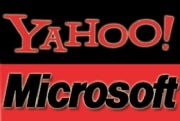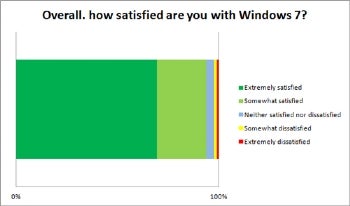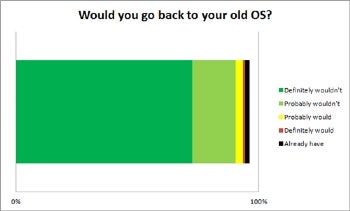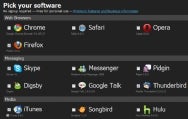
The latest Android 2.0-based "iPhone killer" won't kill the iPhone or the -- and the cheaper HTC Droid Eris is the new smartphone that I think Apple should be concerned about. But there are now six smartphones on the market that will appeal to business and professional users, each with different strengths and weaknesses. This article gives InfoWorld's ratings for all six -- the Apple iPhone, HTC Droid Eris, Motorola Droid, Palm Pre, Research in Motion BlackBerry Bold, and RIM BlackBerry Storm 2 -- plus an interactive ratings form in which you can enter your own weighting for each category in our exclusive Mobile Deathmatch Calculator and get a customized score for each smartphone.
Our buying advice is simple:
-
If you want a mobile device that takes full advantage of Web connectivity, applications, and personal media that you can also use for business connectivity such as e-mail and calendaring, get the iPhone, even with the inferiority of AT&T's 3G network.
-
If you're subject to high security requirements, such as for regulatory compliance, need to manage lots of devices, or just can't handle using a touch-based screen keyboard, you want the BlackBerry Bold, which is available from several U.S. carriers.
-
If you can't stand the thought of using the AT&T 3G network and don't need to access corporate e-mail (outside of POP and IMAP mail servers), you want the HTC Droid Eris, which, like the Motorola Droid, is available only from Verizon Wireless.
[ Read InfoWorld's in-depth mobile deathmatch series: BlackBerry Bold vs. iPhone | Palm Pre vs. iPhone | Motorola Droid vs. iPhone. And see our deathmatch slideshows' head-to-head comparisons: BlackBerry Bold vs. iPhone | Palm Pre vs. iPhone | Motorola Droid vs. iPhone | Read our review of the HTC Droid Eris. ]

The WebOS-based Palm Pre was innovative last spring but has been bested by the new generation of Android devices. (Its sole U.S. carrier, Sprint, appears to have moved on from the Pre, now focusing on Android devices.) The Motorola Droid's keyboard is unusable, and the lack of multitouch support in its included apps makes its few technical advantages over the HTC Droid Eris -- basically, a few extra security features -- a lousy bargain. The BlackBerry Storm 2 was supposed to fix an unusable clickable touchscreen in the original version, but the solution doesn't address the core issue: Tapping is very slow on the screen, to the point that sustained text entry is out of the question. It's not surprising that within weeks of its release, carriers are selling it as part of two-for-one specials.
Windows Mobile and Nokia Symbian devices are also out of the picture. Microsoft's long-delayed Windows 7 Mobile remains vaporware, and making purchase decisions on Microsoft's promise is foolhardy. Nokia's Symbian OS has evolved slowly in the last decade and simply isn't in the same league as modern mobile OSes; Nokia knows that and has a plan to move -- over several years -- to a new OS called Maemo. Someday we'll see what Maemo has to offer; in the meantime, Nokia has been unable to get U.S. carriers to sell its smartphones.
Web and Internet Support

One of the iPhone's revolutionary advances was in bringing the Web to mobile devices in a capable, effective way. All of a sudden, the mobile Web was real. The WebKit browser that underlies the iPhone's Web experience is now used by the Palm Pre and Android devices, and it seems destined for BlackBerry. For now, however, the BlackBerry series are the only holdouts for the old, hard-to-use mobile Web. The BlackBerry OS's ability to reformat Web pages into a stack helps overcome some of its inability to deal with real Web pages, but it's no substitute for the real thing. The Motorola Droid's lack of multitouch support makes navigating Web pages awkward; furthermore, the Droid's multistep process to copy text and the inability to copy graphics fall short of the iPhone's standards.
Likewise, the ability to access Internet services like Facebook, search, YouTube, and so on (another area iPhone pioneered) is pretty much standard across all modern mobile devices today. The same is true for JavaScript support, though this capability is turned off on many BlackBerry models by default and must be activated by the user. Some carriers disable JavaScript support completely.
The one common Web technology in which the iPhone OS is at a disadvantage is Flash Player support -- it doesn't have it. Neither do the Droids. The other devices can display Flash video. All but the BlackBerrys can display QuickTime Video, though there's a third-party app that lets the BlackBerry view QuickTime videos.
Business Connectivity
Where stark differences between the current mobile contenders show is in support for corporate e-mail, calendars, and contacts. The BlackBerry, if you use the extra-cost BlackBerry Enterprise Server, lets you access these services whether your business uses Microsoft Exchange, IBM's Lotus Notes, or Novell Groupwise. It's the most enterprise-capable mobile platform for business connectivity.
The iPhone is second-best for business connectivity. It supports Exchange ActiveSync for e-mail, calendars, and contacts, though there are no clients as yet for Notes or Groupwise. The iPhone OS 3.1 fixes a bug that falsely reported support for ActiveSync on-device encryption policies; the 3G S supports such encryption, but older iPhones do not and thus can't access Exchange if encryption is set as an ActiveSync policy requirement.
The Palm Pre claims to support Exchange, but it supports only a few ActiveSync policies and thus can access only low-security Exchange servers. The two Droids also claim Exchange support, but I could not get the HTC Droid Eris to connect at all, while the Motorola Droid could only send messages, not receive them, a common complaint on the Droid user forums as well. The likely culprit is lack of support for ActiveSync policies. (My colleague Paul Venezia was able to establish a connection between a Droid Eris and an Exchange server that had no ActiveSync policies enabled.)
Note that Verizon enforces an extra $15-per-month fee to access corporate e-mail; if you don't tell Verizon you're using Exchange and don't call tech support for help on using Exchange, you can probably avoid the fee. But given the poor Exchange compatibility, it's pretty much a moot issue. The Motorola Droid does work with Exchange calendars through ActiveSync, but it won't let you respond to invitations.
All six devices support POP and IMAP e-mail accounts, so they're fine for personal and small-business e-mail access. They all support Google's Gmail as well, though BlackBerry owners will want to download RIM's "enhanced" Gmail client. To sync the iPhone to your PC's e-mail and calendar (as opposed to an Exchange server), you have to use either iTunes or the $99-per-year MobileMe service. The two Droids will directly sync to Outlook calendars and e-mails over a USB connection, as well as via Google Apps. BlackBerrys also can sync to Outlook on your PC, and to iCal and Address Book on your Mac, via a USB cable, using the BlackBerry Desktop software.
Application Support
Two billion downloads and counting -- that pretty much says it all about the wealth of available iPhone apps. No device comes anywhere close to the iPhone regarding the variety of third-party apps, and Apple keeps enhancing what apps can do, such as by enabling in-app purchases and subscriptions this summer.
The Google Android Market is looking good in its early days, with several high-quality programs available that match the better iPhone apps' quality, though often with fewer capabilities than their iPhone equivalents. HTC loads the Droid Eris with more than a dozen cool widgets that work only with its Sense UI enhancements to the Android OS; these bring real sophistication to the Droid Eris. Examples include a weather-and-time widget for the home screen, an integrated console for accessing all your messages, a favorites quick-access widget for contacting people with one click, and a mail-preview widget that means you don't have to keep opening the Email app.
Apps for the Pre have largely stalled, though the early ones showed promise. The BlackBerry has the weakest selection of apps, many of which are ungainly and hard to use, reflecting the platform's lack of respect for usability.
The BlackBerry does support unzipping of zipped file attachments in e-mail, unlike the other devices. The iPhone supports viewing of more document types than any of the devices, by dint of supporting its iWork productivity apps in addition to Microsoft Office and PDF documents. The two Droids and the BlackBerrys require that you use a third-party app to view such documents, but they come with this software pre-installed (Quickoffice for Android and Documents to Go for BlackBerry, respectively). The Pre, like the iPhone, comes with its own app for file viewing.
[ When you're on the go, read InfoWorld at our beta mobile site: iphone.infoworld.com. It's compatible with the iPhone, Palm Pre (WebOS), Android-based smartphones such as the Droid and Droid Eris, and other WebKit-based devices. ]

In some -- but not all -- cases, these viewers can also edit documents. Further, editing capabilities can be quite limited. For editing documents, DataViz Documents to Go for BlackBerry is the easiest to use, as it works with e-mail attachments and zip files. The Quickoffice app for the iPhone is a better editor, but it work only with files stored on the iPhone, not directly with e-mail attachments, due to an Apple-imposed limitation. However, Quickoffice for Android is more limited still -- it only supports document viewing. The sole editing app for the Android platform, Documents to Go, can merely edit e-mail attachments in Gmail messages.
The iPhone's copy and paste is the best of the bunch; it's intuitive and works on all sorts of content in almost every app. The BlackBerry's copy-and-paste capabilities are comparable to the iPhone's, but the menu-based interface is harder to use. The Palm Pre and the two Droids have limited copy-and-paste capabilities.
The Motorola Droid boasts an included turn-by-turn navigation app that doesn't require a monthly subscription, unlike the other devices. You can buy such apps for the iPhone and BlackBerry, for between $80 and $130.
All six devices offer the basics when it comes to apps: e-mail, calendar, address book, social networking, test messaging, maps, media player, and photo gallery.
The Palm Pre and HTC Droid Eris go a bit further than the others in their communications-oriented apps in letting you easily manage your contacts across communciations channels. You can even have a conversation that moves from one channel to another with the Pre. Only the Pre makes it easy to move among apps when you have several running, thanks to its "cards" interface.
Security and Management
Although security and management concerns can be used as an excuse not to deal with something new, the truth is that companies subject to regulatory requirements -- such as hospitals, defense contractors, and financial officers -- have to follow those requirements. If those needs apply to you, no other device capabilities can trump security, and that means you're all but certain to choose a BlackBerry. The BlackBerry Enterprise Server (BES) can track and enforce security policies, such as requiring that data stored on the device be encrypted, and it can initiate a remote wipe of a device after a specified number of failed password attempts, for example. Plus, BES can push security, policy, and app updates, as well as monitor device usage.
The iPhone comes in second place for security and manageability, despite its poor reputation. It supports Exchange ActiveSync policies, such as requiring a complex password or on-device encryption. The iPhone 3G S and the late-2009 iPod Touch support on-device encryption, a common security requirement. The iPhone offers more security capabilities than are initially apparent, because many policies can only be set through Apple's iPhone Configuration Utility, a free download. The utility creates policies that iPhone users can install via e-mail, URLs, and USB syncing -- but there's no way to force, confirm, or track installation, so many enterprises can't prove security compliance without physically checking each device.
The Pre, Droid, and Droid Eris have limited security capabilities (the Pre has the most and the Droid Eris the least) and no management tools. Companies that offer mobile management tools are increasingly adding iPhone and Android support, but the scope of these tools remains less than regulation-concerned enterprises require.
The BlackBerrys, iPhone, Pre, and Motorola Droid all support VPN connections; only the HTC Droid Eris doesn't. The BlackBerry's support is superior, as its VPN settings can be remotedly managed by IT. Using the free iPhone Configuration Utility, IT can also send iPhone users VPN profiles to install, but can't remotely manage them.
Voice Capabilities
Although what distinguishes smartphones from cell phones is data access, smartphones still must function as phones and handle voice calls. Except for the iPhone, all have good voice and speaker quality. The iPhone stands apart: Even rabid fans complain about its poor voice quality and frequent dropped calls. It's tempting to blame AT&T for that, except that the BlackBerrys don't suffer these issues on AT&T's network.
All the devices integrate the phone with their address books and search functions. But the Droids' search capabilities are more primitive than those of the other devices, You can't search just your contacts, for example.
Usability
The iPhone set the bar for mobile usability upon its debut and has continued to raise it with the two major OS releases since. The gestures make sense, and the OS and apps are full of little enhancements that bolster ease-of-use, such as the quick-delete swipe and ability to bulk-delete and bulk-move messages, as well as the ability to add Web pages to the home screen's apps grid for easy access. More recently, the iPhone added very intuitive, "smart" copy and paste that works for text and graphics. Where the iPhone falls short is its lack of support for running multiple apps simultaneously, which means switching apps can essentially close an app rather than freeze its current state for later resumption; this one-app-a-time limitation prevents the iPhone from being able to open file attachments and edit them from e-mail, for example. As previously noted, the Pre is the only device that makes it easy to move among multiple apps simultaneously -- as if you're using Mac OS X or Windows. The Droids' ability to pop up a menu of active apps (by holding the Home button) is not as good as the Pre's approach but still better than the iPhone's.
The HTC Droid Eris is surprisingly easy to use and full of well-designed applications that come in very handy. HTC has created its own Sense UI that extends the Google Android UI. While there are a lot of naked rip-offs from the iPhone, the UI is no mere collection of robotically stolen features. As mentioned earlier, the many widgets bring capabilities together intelligently, with many pleasant surprises in terms of options and display. The Motorola Droid has none of these, using the raw Android UI instead. It's a decent OS, but rougher by comparison to what HTC has done. But do note that the HTC Drid Eris has a slower processor than the Motorola Droid, so it's not as snappy switching among or running complex apps.
The Palm Pre's UI is clunkier than either the iPhone's or the Droids'. It shares many of the same principles, but is less consistent in, for example, its use of scrolling and menu access. Also, the separate swipe area for some gestures is confusing, as it's hard to remember which swipes work where on the split screen.
The BlackBerry UI is vintage, and not in a good way. Very reminiscent of Windows 3.0, it uses clunky menus, keyboard shortcuts, and primitive imagery. The trackball is jumpy and inaccurate, so scrolling, selecting, and zooming are imprecise activities. Keyboard aficionados like its extensive use of shortcuts, but there's no reason the BlackBerry OS couldn't retain those while introducing a modern graphical UI.
Beyond UI, the iPhone has also introduced some cool capabilities that let it and its apps do more. For example, an accelerometer allows player-style games and even tools such as carpenter's levels. Also, the built-in compass lets map-based applications become direction assistants. The Palm Pre and the two Droids have copied both capabilities, and the BlackBerry Storm has an accelerometer.
For some users, one major usability issue on the iPhone is the lack of a removable battery and memory card. I haven't had a need for more memory or to replace the battery on my two-year old device, but the proliferation of SD cards for storing and sharing photos -- even the newest Apple MacBook Pros have SD card slots -- makes the memory card omission a legitimate demerit for the iPhone's usability.
But the most divisive issue for usability is the keyboard. Many people hate touch keyboards, such as that pioneered in the iPhone. The BlackBerry Bold's QWERTY keyboard is much easier to use off the bat, though I became as proficient on the iPhone's touch keyboard as I am on the Bold's physical keyboard after several weeks.
The Motorola Droid's touch keyboard is similar to the iPhone's, lacking only the latter's multilingual capabilities. The HTC Droid Eris's QWERTY keyboard is easier to use than either the Motorola Droid's or the iPhone's, thanks to a cool hold-and-press feature to get fast access to common special characters such as numerals, $, and !. The Motorola Droid's physical keyboard is very hard to use, with low-travel keys and flat surfaces that make touch-typing difficult due to lack of tactile feedback. Using it slowed me down immensely, and I quickly abandoned it in favor of the much faster touch keyboard. The difference between the Motorola Droid's physical keyboard and the BlackBerry Bold's is night and day.
The Palm Pre's keyboard is similar to the BlackBerry Bold's, but the glossy keys and red-on-black print make it harder to use, especially when you're hunting for a symbol. The BlackBerry Bold's matte finish and clearer text avoid that problem. But the Storm 2's traditional multiple-characters-per-key BlackBerry keyboard is difficult to work with, as the device has to predict which letter you want on each key. There's no reason RIM couldn't use the Bold's keyboard on the Storm 2, and it should have, especially because its touch keyboard is unusable, due to how the screen must flex and rebound as you tap each character. That creates a delay for each and every character, so it's slow as molasses. (The original Storm's screen actually had to click for each character, and the flex action was meant to be less intrusive -- it isn't.)
The other major input advance from the iPhone was the use of a multitouch screen, which lets you do gestures involving more than one finger. The use of gestures opens up almost unlimited possibilities for what you can control via touch. Most of the other touchscreen competitors (the HTC Droid Eris, BlackBerry Storm 2, and Pre) have adopted the same approach -- with the glaring exception of the Motorola Droid, whose bundled apps don't support gestures. That ill-advised decision puts the Motorola Droid at a major usability disadvantage.
Finally, the physical devices vary in size, shape, and button arrangement, but by and large, they all have good designs. The Palm Pre feels the cheapest of the bunch in terms of finish and materials quality, and its fuzzy screen is an issue. The Motorola Droid auto-adjusts for brightness, using a light sensor to determine the screen intensity, but I found that it often flickered as it continually adjusted brightness in naturally lit rooms. Its on/off buttton is also hard to access.
Personal Technologies
Although these devices are attractive for potential business or professional use, they're also meant to be fun personal devices. The iPhone leans heavily on iTunes for access to music and videos -- after all, the iPhone is also an iPod. There's a reason the folks at Palm keep trying to hack iTunes to allow syncing to the Pre.
The other devices can all play music and videos, using Internet and carrier services for over-the-air access and USB syncing and SD cards for access to PC-based files. (Android users should get the DoubleTwist app for Macs and PCs that syncs Android devices with iTunes libraries.)
The Motorola Droid boasts a 5-megapixel camera with LED flash, giving it the most capable built-in camera based on the specs. But as my Chicago Sun-Times colleague Andy Ihnatko has shown, the iPhone 3G S's 3-megapixel camera takes better pictures most of the time, likely due to its software's correction capabilities. The Pre, BlackBerry Storm 2, and HTC Droid Eris have midquality 3-megapixel cameras, while the BlackBerry Bold has a low-quality 2-megapixel camera. All but the Bold's are capable of video capture as well.
The iPhone stands out for its gaming and entertainment capabilities. There are hundreds of cool games and playtime apps that can amuse you for hours. The other devices have a much more limited selection of playthings.
pcworld





















